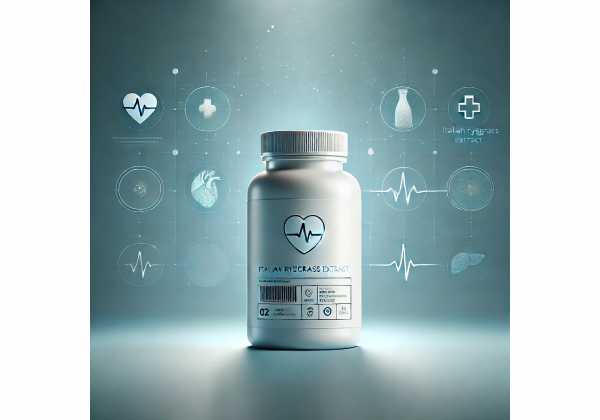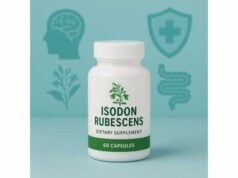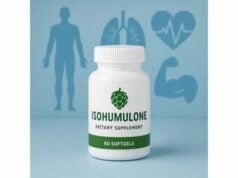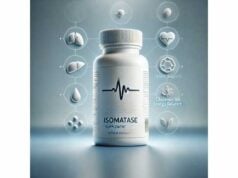
Italian ryegrass extract comes from Lolium multiflorum, a fast-growing cool-season grass best known for forage and cover cropping—not as a mainstream human supplement. In recent years, however, a handful of niche products have started marketing “Italian ryegrass extract” for generalized wellness or antioxidant support. That shift raises two practical questions: what, exactly, is in these extracts, and what can you reasonably expect from them? This guide keeps the focus on clear definitions, realistic benefits, and safety. You will learn how Italian ryegrass differs from better-studied botanicals, how extracts are made and standardized (if at all), what “dosage” claims really mean, and which people should avoid the product altogether. You will also find a troubleshooting section for common pitfalls—like confusing grass extracts with grass pollen allergy tablets—and a plain-language summary of the present evidence so you can make a careful, informed choice.
Key Insights
- Potential benefits are modest and general (antioxidant and fiber-adjacent effects); no condition-specific indications are established.
- Labels vary widely; when sold as a supplement, common serving suggestions cluster around 250–500 mg/day, but no evidence-based human dose is established.
- Safety caveat: grass-related allergy risks (especially for pollen-sensitized individuals) and quality concerns (pesticide or nitrate residues) warrant caution.
- Avoid use in pregnancy and for anyone with significant grass or cereal pollen allergy; do not confuse nutritional grass extracts with prescription allergy immunotherapy.
Table of Contents
- What is Italian ryegrass extract and how it is made?
- Does Italian ryegrass extract offer real benefits?
- How to use: forms, dosage, and timing
- Quality variability: what to check before buying
- Mistakes to avoid and simple troubleshooting
- Is Italian ryegrass extract safe and who should avoid it?
What is Italian ryegrass extract and how it is made?
Italian ryegrass (Lolium multiflorum) is a short-lived, cool-season grass cultivated globally for pasture, hay, silage, and soil cover. Unlike culinary herbs or medicinal roots, grasses are rarely consumed as concentrated human extracts. When you see “Italian ryegrass extract” on a bottle, it typically refers to one of three raw material choices:
- Whole aerial parts (young leaves and stems). These are harvested before flowering, dried, milled, and extracted, often with water or hydroalcoholic solvents. The result is a broad, green concentrate carrying plant sugars, organic acids, chlorophylls, phenolic compounds, and small amounts of minerals.
- Juice-type concentrates (“grass juice powders”). Fresh blades are pressed; the juice is clarified and dehydrated. This tends to preserve more water-soluble antioxidants but yields less fiber.
- Pollen-derived fractions. Less common for Italian ryegrass but widely known for other grasses, pollen concentrates emphasize proteins, lipids, and micronutrients—along with allergy risks. Because rye, timothy, and mixed grass pollen tablets are used in prescription allergy therapy, labeling must clearly separate any food-grade extract from regulated immunotherapy products.
Extraction methods matter. Water extraction favors hydrophilic compounds (simple phenolics, flavonoid glycosides, organic acids). Hydroalcoholic extraction (for example, 20–60% ethanol) pulls a broader range, including some lipophilic constituents. Supercritical CO₂ is uncommon here; it targets nonpolar fractions and would miss many antioxidant compounds typical of green plants.
Standardization—the practice of guaranteeing a minimum level of specific marker compounds—is another key difference between Italian ryegrass extract and better-studied botanicals. Most ryegrass products are not standardized to a unique, clinically validated marker. If a label lists “total phenolics,” “chlorophyll,” or generic “flavonoids,” those are broad categories rather than disease-specific actives. That is a signal to manage expectations: without a target compound and dose–response data, benefits tend to be general rather than condition-specific.
Two agronomic details deserve attention because they can influence safety and composition:
- Endophytes. Many cool-season grasses can host symbiotic fungi. In livestock, certain endophyte alkaloids cause adverse effects (for example, neurologic “staggers” with specific species and alkaloids). Commercial human supplements should be sourced from appropriately screened material harvested before seed set, but quality systems vary.
- Residues and nitrates. As a forage plant, ryegrass can accumulate nitrates under particular conditions (high nitrogen fertilization, drought, low light). While problems are well characterized in ruminants, concentrated human extracts should be tested to keep nitrate and potential pesticide residues within accepted limits.
Put simply, Italian ryegrass extract is best thought of as a green-plant concentrate from a widely grown forage grass, not a classical medicinal herb. The identity and quality depend on part used, harvest timing, and processing. If a label cannot answer “which plant part?” and “what markers?”, that lack of specificity should guide both your expectations and your safety checklist.
Does Italian ryegrass extract offer real benefits?
When considering benefits, distinguish between what is plausible given the plant’s chemistry and what is proven in well-controlled human trials. For Italian ryegrass extract, the proven column is thin; the plausible column is broader but nonspecific.
Plausible, general benefits (non-disease-specific):
- Antioxidant support. Like other fresh green plants, young ryegrass tissues contain polyphenols, vitamin-adjacent compounds, chlorophylls, and antioxidant enzymes. In test-tube systems, such mixes can neutralize free radicals or reduce markers of oxidative stress. Translating this into a predictable human outcome requires standardized dosing, which most ryegrass products lack.
- Digestive neutrality and “green” satiety signals. Powdered green concentrates may add bulk and a mild bitter-green taste to smoothies or broths. While not a fiber supplement per se, this can contribute subtly to feelings of satiety in meals that otherwise lack leafy vegetables.
- Micronutrient consolidation. Depending on soil, harvest timing, and drying, ryegrass concentrates may carry small amounts of potassium, magnesium, and trace elements. However, concentration is variable; relying on such extracts for mineral repletion is unreliable.
What is not established:
- Condition-targeted claims. There are no robust, replicated clinical trials showing that Italian ryegrass extract, at defined doses, treats or prevents specific conditions (for example, high cholesterol, cancer, depression, or arthritis).
- Equivalence to wheatgrass or barley grass. Although all are young grasses, composition differs by species, growing conditions, and processing. Benefits claimed for “wheatgrass shots” or barley grass powders do not automatically apply to Italian ryegrass.
- Allergy therapy. Prescription sublingual tablets and subcutaneous shots for grass-pollen allergy use standardized allergen extracts (often timothy grass and related pollens) under medical supervision. Those therapies are not interchangeable with food-grade Italian ryegrass extracts.
Who might see value in practice? People trying to add a once-daily green addition to a mixed diet may prefer a vegetable serving, but if they choose a grass-based extract, Italian ryegrass could serve as an occasional “green” in a rotation with other plant powders. The key is to aim for culinary integration—not disease treatment—and to choose products with basic quality assurances.
How to calibrate expectations: If a label avoids specifics (no part used, no assay numbers, no third-party testing) yet promises broad health effects, scale back your expectations. Consider Italian ryegrass extract similar to a garden-variety green powder: potentially pleasant and neutral for some, unnecessary for many, and not a replacement for vegetables or medical treatment. Any noticeable effect—energy, digestion, “detox”—is more likely to reflect routine, hydration, and accompanying diet changes than a unique pharmacologic action of ryegrass constituents.
In short, general wellness support is plausible; disease-level benefits are unproven. Recognize the category for what it is and make choices accordingly.
How to use: forms, dosage, and timing
Because there is no evidence-based human dose for Italian ryegrass extract, “dosage” guidance centers on safe, conservative use rather than therapeutic targets. Think culinary adjunct, not medicine.
Common forms:
- Capsules or tablets containing a dried extract or juice powder (often 250–500 mg per serving).
- Bulk powders intended for mixing into smoothies or water (typically 1–2 teaspoons, which may equate to roughly 2–4 grams of plant powder depending on density).
- Liquid tinctures are uncommon; when present, they are usually generic “green blends” with unspecified proportions.
Practical starting points:
- If using capsules: begin with 250 mg once daily with food to assess tolerance. If desired, increase to a label-suggested 500 mg/day. Higher amounts (for example, 1,000 mg/day) lack evidence and increase the chance of digestive upset in sensitive users.
- If using powders: mix 1 teaspoon into a smoothie or broth once daily. Pay attention to taste and digestion; more isn’t necessarily better.
- If you already eat plentiful greens: you may not notice any difference; consider skipping supplementation and redirecting funds to fresh produce.
Timing and administration:
- With meals is often easier on the stomach and helps any fat-soluble compounds (for example, chlorophyll derivatives) integrate into mixed dietary fats.
- Hydration matters. Green powders can thicken; drink extra water to avoid a chalky afterfeel or mild constipation.
- Cycle rather than escalate. Use on days when you miss vegetables; skip on days you meet your produce goals. This keeps intake modest and intentional.
Stacking with other supplements: Italian ryegrass extract is generally diet-adjacent; it doesn’t require stacking. If you use a multivitamin, a dedicated fiber supplement (psyllium, inulin), or a mineral like magnesium, ryegrass extract should not replace them. Greens powders are not a shortcut to micronutrient adequacy.
When to stop or change course:
- Allergic symptoms (itchy mouth, throat tightness, sneezing, hives) mean stop immediately. People with grass pollen allergy may be more reactive.
- Digestive discomfort (bloating, cramping, loose stools) that persists beyond a few days at a low dose suggests this product is not a good match.
- No perceived value after 4–6 weeks at a modest, consistent dose is a good reason to discontinue and focus on whole-food strategies.
Special groups:
- Pregnancy or breastfeeding: avoid due to insufficient safety data.
- Children: skip unless specifically recommended by a clinician for a clear, food-based reason.
- Medication users: if you take anticoagulants, antiplatelets, or have metabolic disorders, keep your clinician in the loop; while direct interactions are unlikely, caution is prudent when adding concentrated plant products.
Bottom line: keep doses low, integrate with meals, and use only if you actually need a green boost on days your plate falls short. No established therapeutic dosing exists, and more is not better.
Quality variability: what to check before buying
Because Italian ryegrass extract lacks a well-defined active marker and pharmacopoeial monograph, quality varies widely. A smart pre-purchase checklist prevents disappointments and minimizes risk.
1) Identity and plant part.
Look for the full botanical name (Lolium multiflorum) and the plant part (aerial parts before flowering, juice powder, or pollen). Vague terms like “green blend” or “ryegrass complex” with no species or part listed deserve skepticism.
2) Standardization and assays.
If a brand claims “standardized,” it should name the marker (for example, “≥ 10% total phenolics by gallic acid equivalents”). General marketing phrases (“rich in antioxidants”) without numbers are not standardization.
3) Contaminant testing.
Greens are prone to pesticide residues, heavy metals, microbial contamination, and, for grasses, nitrates. Seek third-party certificates or summaries stating compliance with accepted limits for these categories. When in doubt, choose companies that routinely publish batch-specific certificates of analysis (COAs).
4) Allergen controls.
If you have grass pollen allergy, treat ryegrass extracts cautiously. While food-grade leaf/stem extracts differ from pollen therapy, cross-contamination risks exist in facilities handling mixed plant materials. Look for allergen statements and avoid products that also process large amounts of grass pollens.
5) Agricultural sourcing.
Ask about harvest stage and whether the crop is grown under practices that reduce contamination (for example, harvested pre-flower to lessen pollen load; low-input fields to minimize pesticide use). Organic status can help with pesticide concerns but does not guarantee nitrate control.
6) Manufacturing transparency.
Credible brands can answer: Where is it made? Which solvent system is used? What’s the typical yield (kg of fresh plant per kg of extract)? What tests do they run beyond basic microbial checks? If questions meet silence or generic language, consider alternatives.
7) Label realism.
Be wary of disease claims. Supplements should not promise to treat, cure, or prevent specific conditions. Phrases like “supports general wellness” or “adds a daily green serving” align better with what a ryegrass extract can realistically offer.
8) Price signals.
Extremely cheap powders may reflect low-grade material or lax testing. Conversely, a high price point is not proof of quality; it must be backed by data. Compare brands on verifiable criteria, not marketing flair.
9) Packaging and storage.
Choose opaque containers that limit light exposure. Store tightly closed in a cool, dry place; chlorophyll-rich powders can oxidize and stale if left open and warm.
10) Your personal test.
After purchase, start low, monitor for reactions, and evaluate honestly after a month. If you don’t notice any culinary or routine benefit, discontinue. Supplements that deliver no discernible value—even if harmless—are still not worth your budget.
In a category with no single “hero molecule,” your best protection is transparency: clear species identity, specific assays, third-party testing, and responsive customer support.
Mistakes to avoid and simple troubleshooting
Mistake 1: Confusing ryegrass extract with allergy immunotherapy.
Prescription or clinic-supervised allergy treatments use standardized grass pollen extracts (often timothy and related species) designed to retrain the immune system. Food-grade Italian ryegrass extracts are not the same and should never be self-substituted for medical therapy.
Fix: If your goal is allergy control, talk to an allergist. If you simply want a green addition to your diet, keep expectations culinary and choose a screened, food-grade product.
Mistake 2: Treating it like a medicine with escalating doses.
Without a defined active and dose–response curve, “more” rarely means “better.” Pushing grams of green powder can cause digestive irritation with no added benefit.
Fix: Use minimal, consistent amounts (for example, 250–500 mg capsules or 1 teaspoon powder) and evaluate after several weeks.
Mistake 3: Ignoring allergy history.
People sensitized to grass or cereal pollens may react to poorly screened plant materials.
Fix: If you have seasonal grass allergies, either avoid ryegrass extracts or try a tiny test dose under quiet conditions, with rescue antihistamines available—and stop at the first symptom.
Mistake 4: Overlooking contaminants and nitrate risk.
Greens grown with intensive nitrogen fertilization or harvested during stress can accumulate nitrates. Poorly managed drying/processing can promote microbial growth.
Fix: Prefer brands with published third-party testing that explicitly mentions nitrates, microbiology, heavy metals, and pesticide panels. Avoid products with musty odors or visible clumping due to moisture ingress.
Mistake 5: Using it to “replace vegetables.”
Green powders may color a smoothie, but they don’t replicate the fiber diversity, chewing mechanics, and full micronutrient matrix of whole vegetables.
Fix: Treat ryegrass extract as a backup for low-veg days—not an everyday stand-in for salads and cooked greens.
Mistake 6: Assuming all grasses are interchangeable.
Claims for wheatgrass or barley grass do not automatically apply to Italian ryegrass. Species, growth stage, and extraction method change composition.
Fix: Read labels closely. Choose based on actual specifications, not borrowed hype.
Troubleshooting quick tips:
- Mild bloating: cut dose in half, take with meals, and increase hydration.
- Chalky texture (powder): blend with citrus or yogurt, or switch to capsules.
- No effect after a month: discontinue; redirect funds to fresh produce or a targeted supplement with clearer evidence.
- Bad taste or odor: quality may be subpar or the product oxidized; stop using and contact the brand.
The theme is simple: know why you are using it, keep amounts modest, and let your experience—not marketing—decide whether it earns a place in your routine.
Is Italian ryegrass extract safe and who should avoid it?
For most healthy adults, a small daily amount of a screened, food-grade greens powder is unlikely to cause harm. That said, Italian ryegrass presents specific caution areas that deserve attention.
Allergy and cross-reactivity.
People with grass pollen allergy may be more prone to oral or systemic reactions—itchy mouth, sneezing, hives, wheeze—especially with products containing traces of pollen. Individuals with wheat, rye, or barley pollen sensitivities should exercise similar caution. Any sign of an allergic reaction warrants immediate discontinuation.
Pregnancy and lactation.
There is no safety data for concentrated ryegrass extracts during pregnancy or breastfeeding. Because composition is variable and contaminants are a concern in any plant concentrate, avoid use in these life stages.
Children.
Skip unless a clinician specifically recommends a food-based strategy and can verify product quality. Young children are more vulnerable to allergic reactions and to contaminants relative to body weight.
Medication and medical conditions.
While direct drug interactions are unlikely in typical culinary doses, take extra care if you use anticoagulants, have kidney stones (certain green concentrates carry oxalate), or manage metabolic disorders where consistency of vitamin K intake matters. As with any new supplement, let your clinician know.
Contaminants and agricultural residues.
Risks include pesticides, heavy metals, microbes, and nitrates. Trusted brands should demonstrate third-party testing. If a product is vague about testing or sourcing, choose another.
Endophyte-related concerns.
Some grasses harbor fungal endophytes that can produce alkaloids problematic in livestock. Human supplements should not contain biologically meaningful levels, but poor sourcing is a theoretical risk. Asking about endophyte screening is reasonable when evaluating suppliers.
Upper limits and duration.
Because no therapeutic dose exists, set a commonsense ceiling: for capsules, ≤ 500 mg/day; for powders, ≤ 1 teaspoon/day. If you choose to continue, cycle use (for example, several weeks on, then several weeks off) and reassess whether it still serves a purpose.
When to avoid altogether:
- You have strong grass allergies or have previously reacted to greens powders.
- You are pregnant or breastfeeding.
- You expect condition-specific benefits (cholesterol lowering, anticancer, antidepressant effects). Use evidence-based options instead.
- You cannot verify product testing for contaminants.
In essence, Italian ryegrass extract is optional at best. Many people will do as well—or better—with a consistent intake of leafy vegetables, adequate hydration, and targeted supplements only when there is a clear evidence base. If you do experiment, keep it modest, monitor your response, and prioritize brands that can prove what’s in the jar—and what’s not.
Medical Disclaimer
This article provides general information and is not a substitute for personalized medical advice, diagnosis, or treatment. Italian ryegrass extract is not an established therapy for any medical condition. If you have health concerns, allergies (especially to grasses), are pregnant or breastfeeding, or take prescription medications, consult a qualified healthcare professional before using any supplement. If you experience symptoms of an allergic reaction—such as hives, wheezing, or swelling—stop use and seek medical care immediately.
If you found this guide helpful, please consider sharing it on Facebook, X (formerly Twitter), or your preferred platform, and follow us for more evidence-aware, people-first health content. Your support helps us continue creating high-quality resources.










